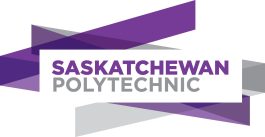Incorporating the use of an AI tool into assignments
Faculty may wish to allow or promote the use of generative AI tools by students, to help them learn about such tools, understand their strengths and weaknesses, or to use them productively to improve critical thinking and writing skills.
Please note the accessibility, privacy, and other ethical considerations discussed in this resource when requiring students to use such tools.
Affirm what is to be assessed
Your first step is to consider your learning outcome (LO).
The learning outcome describes the critical knowledge and skills that students must demonstrate by the end of a course. It is crafted according to our Curriculum Framework guidelines and forms the basis for assessing student learning. A learning outcome answers the question, “What are students expected to demonstrate upon completion of the course?” It also reflects the integration of knowledge, skills, and attitudes expected, which is indicated by the action verb chosen and its placement in Bloom’s Taxonomy.
As an example, a learning outcome might be: Compare operational facility layouts.
The verb “compare” will help determine the method of assessment. “Compare” is a level 4 verb in the cognitive domain, and is considered at the analysis level. Analysis moves beyond knowledge, comprehension, and application, and includes the ability to separate concepts into component parts to understand structure, and facts vs. inference. Appropriate assessment might include a case study, diagram, concept map, investigation, etc.
Confirm the if, when, and how it makes sense to use AI
There will be times when AI use is appropriate and can enhance learning, and other times when it should not be used.
Consider, “Is there a way to leverage generative AI to engage students in deeper learning, provide meaningful practice, or scaffold assignments?”
Be sure to communicate your expectations for generative AI use on each assessment. Giving clear directions (task), elaborating on how students can be successful (expectations), establishing how they will be evaluated (criteria), and promoting academic integrity are essential.
Collaborating with your colleagues to see how they are using AI in assessments is always a good idea.
- Have students analyze AI-generated text or other outputs
One way to include the use of generative AI in assignments is to have students critique responses provided by generative AI. Students could evaluate for accuracy, analyze strengths and weaknesses, identify gaps or biases, examine whether summaries match the original, or examine the credibility of cited sources.
- Ideation and brainstorming
Students could use AI to generate initial ideas for research topics and questions that they then refine and articulate further. AI could help them move from broad ideas to more specific questions.
- Research assistance
Students could use AI platforms to do basic research to get an overview of a topic, generate research questions, summarize articles, explain complex topics, and suggest sources for further reading.
- Improving grammar and other aspects of writing
Students can input parts of their writing into ChatGPT or other tools to receive feedback on common grammatical errors and tone. ChatGPT can not only edit writing, but explain what it changed and why, which could be a useful way for students to learn.
- Studying and reviewing
Flashcards, quizzes, summaries, and practice questions can be accessed to reinforce learning and prepare for examinations.
- Adding creative elements to assignments
Students could use generative AI tools to add more creative elements to their work. Image generators can be used to enhance slide presentations, games, apps, portfolios, blog posts, and more. There are also AI tools that can generate music or sound effects that could be used for student-created videos or games. Students could also use AI text generators to create draft scripts for videos that they edit and refine to fit with the required learning outcome.
Attributions
AI in Assignment Design. (2024). Center for Teaching Innovation. Cornell University.
Generative Artificial Intelligence in Teaching and Learning Copyright © 2023 by Centre for Faculty Development and Teaching Innovation, Centennial College is licensed under a Creative Commons Attribution 4.0 International License.
Assessments by the Centre for Teaching and Learning at Queen’s University is licensed under CC BY SA 4.0.
Assessment Strategies. This work is licensed under CC BY 4.0.

